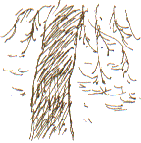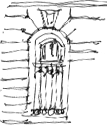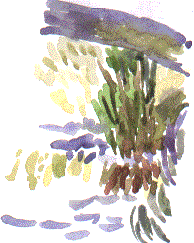Nature Diary Rocks History Gallery Links Home Page  THE CENTRE of Paris seems like a stage set on which some of the great events of history were played out. I think of Jacques de Molay, the last Grand Master of the Knights Templars, who in 1314 was burnt at the stake near Notre Dame on the orders of the French King, Philip IV. As if by poetic justice, the old tower of the Templars became the prison where Louis XVI and Marie Antoinette were held before their public executions in the Place de la Concorde in 1793.
THE CENTRE of Paris seems like a stage set on which some of the great events of history were played out. I think of Jacques de Molay, the last Grand Master of the Knights Templars, who in 1314 was burnt at the stake near Notre Dame on the orders of the French King, Philip IV. As if by poetic justice, the old tower of the Templars became the prison where Louis XVI and Marie Antoinette were held before their public executions in the Place de la Concorde in 1793.Seeing the scale of the place and remembering those dramatic events, the music of Hector Berlioz, such as the March to the Scaffold from the Symphonie fantastique, doesn't seem so overblown after all. He was born ten years after the king was beheaded. With all that weight of history you'd think the centre of Paris would feel grim. What lifts it for me is that the visual arts, and painting in particular, lie at the heart of the city. As we're walking through the Jardin des Tuilleries on the banks of the Seine we find ourselves at the Orangery. It's here that the biggest canvases by the country's best-loved painter are displayed. Coming across the place by chance makes it seem all the more magical as we step inside . . .
I find it extraordinary that Les Nympheas was a public commission painted during the 1914-18 war. A questionmark hung over the future of France. Paris was in earshot of the horrors of mechanised warfare on the Western Front. Yet there's nothing overtly patriotic about these canvases. Just an old man closely observing his pond.
Coming up for AirDid he paint them to knock back the frontiers of painting? To kick start the abstract movement? Perhaps. But to me it seems much simpler than that.As George Orwell put it; Why don't people, instead of the idiocies they do spend their time on, just walk around looking at things? That pool, for instance - all the stuff that's in it. Newts, water-snails, water beetles, caddis-flies, leeches, and God knows how many other things that you can only see with a microscope. The mystery of their lives, down there underwater. You could spend a lifetime watching them, ten lifetimes, and still you wouldn't have got to the end of that one pool. And all the while the sort of feeling of wonder, the peculiar flame inside you. It's the only thing worth having, and we don't want it.'I've quoted the passage before, from Coming up for Air, but it seems to be very much what Monet intended.
Paint on Canvas On a more mundane level these large canvases give me a chance to see exactly how he went about painting. There's nothing hidden when painting on this scale. I'm interested, for example, in the trunks of the willows, which he paints life-size. Reading some books on Monet you get the impression that by some alchemy he put light, the spectrum itself into his paintings. But he worked with ordinary canvas and the colours that any of us can buy at the local art store. Yes, some of the trunks have streaks of primary colour on them; a few dashes of orangey red and rather more of blue. But some are painted simply in streaks of of brown, or greeny brown, very much the colours that you'd see on the trunk of a willow itself.
On a more mundane level these large canvases give me a chance to see exactly how he went about painting. There's nothing hidden when painting on this scale. I'm interested, for example, in the trunks of the willows, which he paints life-size. Reading some books on Monet you get the impression that by some alchemy he put light, the spectrum itself into his paintings. But he worked with ordinary canvas and the colours that any of us can buy at the local art store. Yes, some of the trunks have streaks of primary colour on them; a few dashes of orangey red and rather more of blue. But some are painted simply in streaks of of brown, or greeny brown, very much the colours that you'd see on the trunk of a willow itself.It's somehow reassuring to know that Monet wasn't above using brown paint. We see hundreds, thousands of people queuing up to gaze at paintings while we're in Paris. But the willows by the Seine; no-one seems to stop and look at them.
|

 We enter the floating world of Monet's water lilies. Four widescreen canvases stretch along the walls of each of the two oval galleries.
We enter the floating world of Monet's water lilies. Four widescreen canvases stretch along the walls of each of the two oval galleries.